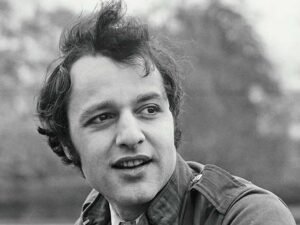Walking meditation offers a refreshing and grounded way to experience mindfulness in motion. Unlike sitting meditation, where stillness and inward focus are emphasized, walking meditation invites awareness into the body’s rhythm and the world around it. This practice combines physical movement and mental stillness, creating a dynamic balance that can deepen your connection to the present moment. Many people find it easier to stay focused when they walk because the sensation of moving feet, shifting balance, and flowing breath provides continuous points of attention. Walking meditation can be done in a quiet natural setting, a bustling city park, or even a hallway at home, making it a flexible and approachable practice. In a time when many people feel disconnected from their bodies due to busy routines or stress, learning to walk mindfully opens up a new relationship with the simple act of moving through space.
Walking Meditation as Mindful Movement
-
Cultivating Awareness Through Deliberate Movement
At its heart, walking meditation is about slowing down and becoming fully conscious of each movement, each breath, and each sensation. Instead of rushing from one destination to another, the purpose is to pay attention to the journey itself. With each step, practitioners focus on the feeling of the ground beneath their feet, the subtle shifts in balance, and the natural rhythm of their breath. This level of attentiveness can transform a simple stroll into a deeply centering experience. Often, a designated path is chosen, one that is short enough so that the focus remains on the act of walking rather than reaching an endpoint. Some find that repeating a word or phrase mentally with each step, such as “arriving” and “home,” helps anchor their attention. Shoes that are comfortable and clothes that allow for easy movement are helpful for walking meditation, encouraging a natural, unforced pace. Over time, these mindful steps can cultivate greater patience, reduce stress, and help you stay present even in daily life outside of the practice.
-
Integrating the Senses During Practice
One of the unique gifts of walking meditation is the way it opens up the senses. Instead of closing off the world, practitioners are encouraged to notice it deeply and without judgment. The warmth of sunlight on the skin, the sound of leaves rustling in the breeze, the distant hum of city life—each sensation becomes part of the meditative experience. Rather than labeling these perceptions as good or bad, the aim is to observe them with curiosity and acceptance. This sensory engagement helps break the mind’s habitual patterns of distraction and rumination, anchoring awareness firmly in the present moment. In walking meditation, the world is not a backdrop but an active participant in the practice. The natural rise and fall of sounds, sights, and sensations offer endless opportunities to return attention to the moment. With regular practice, these sensory skills carry over into daily life, making ordinary moments richer and more vivid.
-
Finding a Personal Rhythm in Walking Meditation
Walking meditation does not impose a rigid formula; instead, it encourages individuals to find their own pace and style. Some people prefer a very slow, almost gliding pace that accentuates each micro-movement of the foot lifting, moving, and settling back onto the ground. Others feel more natural walking at a relaxed, everyday pace, focusing on the flow of breath or the subtle sensation of weight shifting from one leg to the other. The essential element is not speed but mindfulness—walking with awareness rather than mechanical autopilot. Beginners often benefit from starting with a few minutes of slower walking to tune into the body before settling into a natural rhythm. As familiarity with the practice grows, walking meditation can be adapted to different environments, moods, and energy levels. Whether brisk or slow, in a quiet grove or down a lively street, the essential goal remains the same: to meet each step with open awareness and an accepting heart.
-
Bringing Walking Meditation into Everyday Life
One of the beautiful aspects of walking meditation is its seamless integration into daily routines. It is not limited to designated practice sessions but can infuse ordinary walks with a more profound sense of presence. Walking to work, strolling through the grocery store, or even moving from one room to another at home becomes an opportunity to pause, breathe, and reconnect with the body and surroundings. These mini-meditations can serve as powerful tools for managing stress, especially on busy or challenging days. Simply slowing the pace slightly, breathing consciously, and noticing physical sensations can transform a rushed commute into a peaceful ritual. Regular walking meditation practice also nurtures emotional resilience. By grounding awareness in the body and breath, it becomes easier to respond calmly rather than react impulsively in challenging situations. Over time, this groundedness spreads into every corner of life, helping to cultivate a steadier, more compassionate presence in both inward experiences and outward interactions.
Walking meditation offers a practical and enriching path toward greater awareness, patience, and inner peace. Through mindful movement, sensory engagement, and acceptance of each moment as it is, this practice reconnects the mind and body in a world that often pulls them apart. Walking meditation can be adapted to fit any lifestyle, whether through brief moments of awareness during daily errands or longer, dedicated walks in nature. Each mindful step becomes a small act of reclaiming attention from distraction and rooting it in the richness of the present moment. As more people seek ways to cultivate balance in fast-paced lives, the simple, intentional practice of walking meditation stands as a potent reminder that clarity, peace, and joy can be found not in distant achievements, but in the very steps we take right now.










